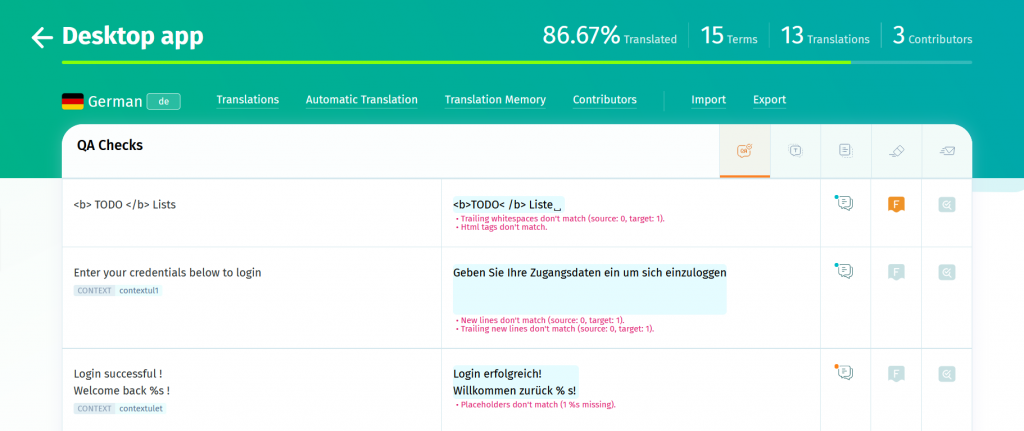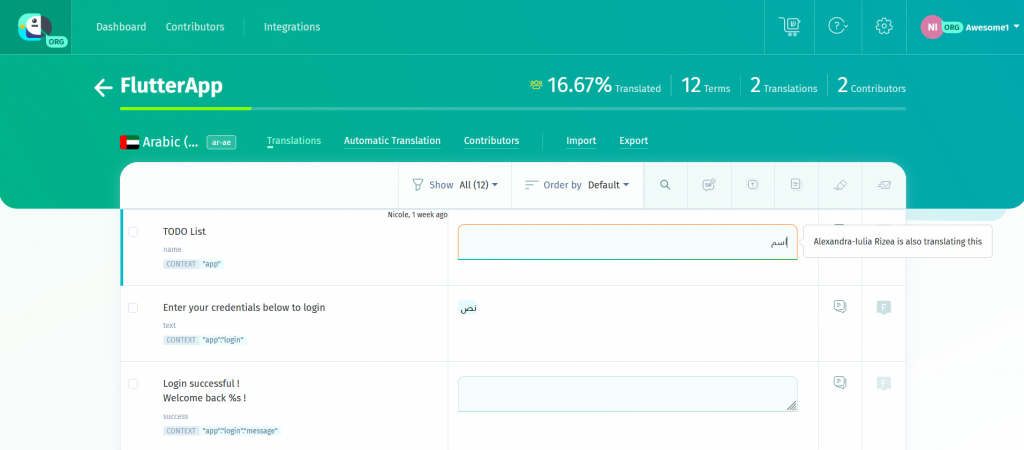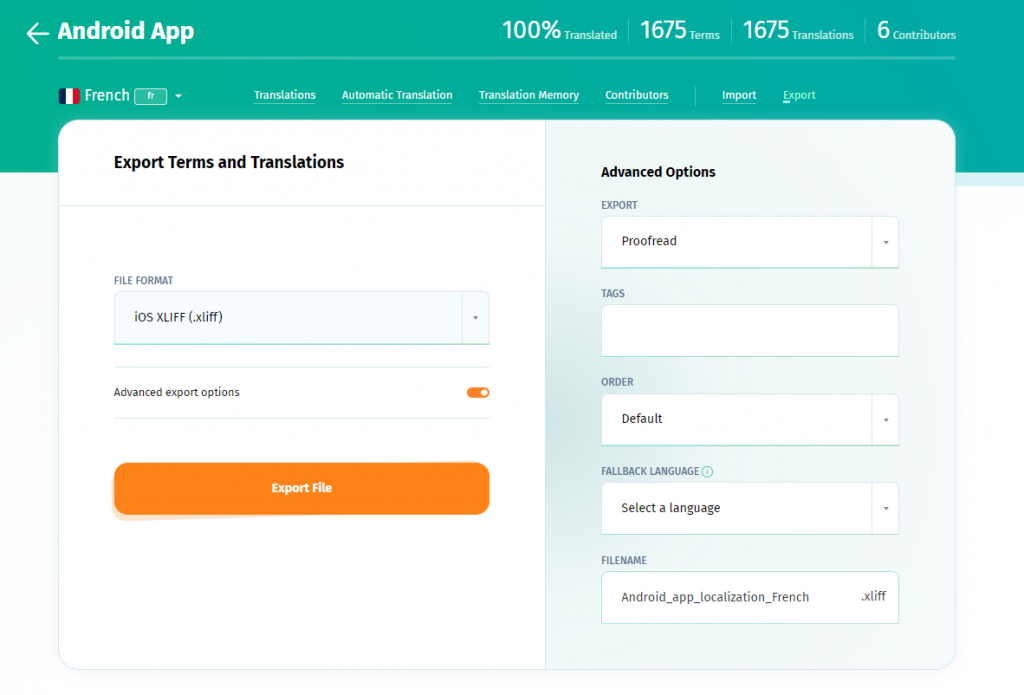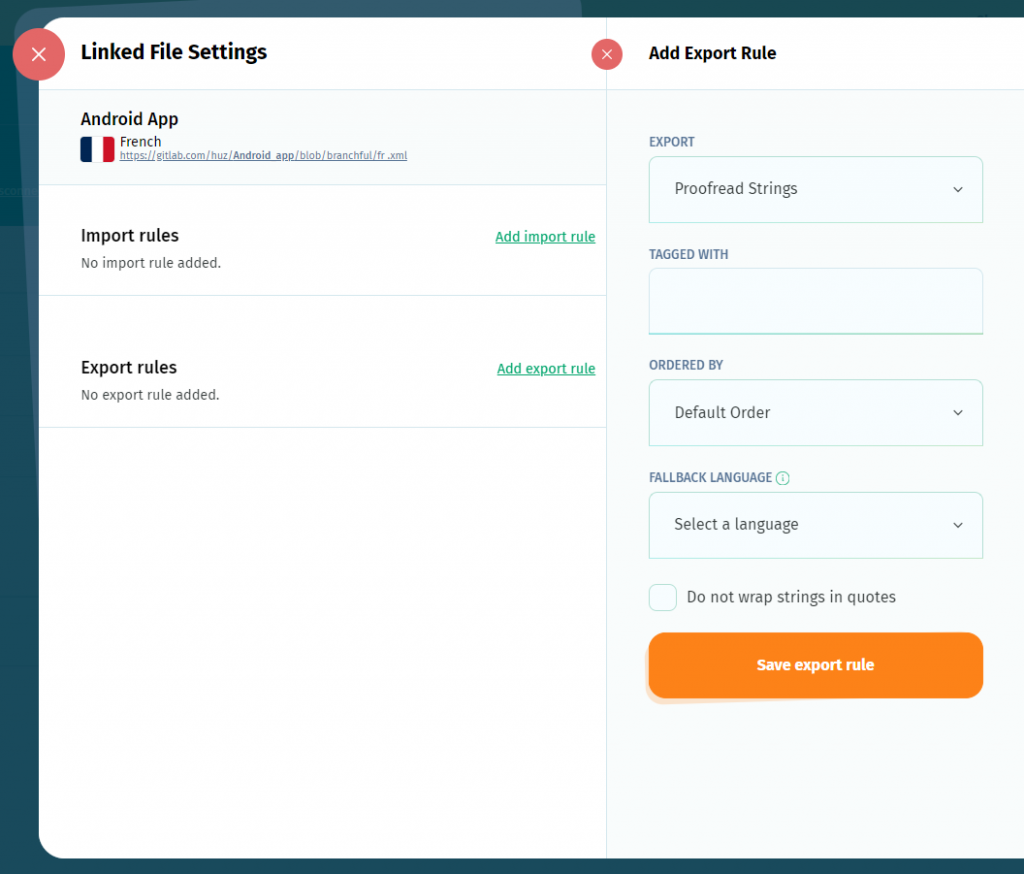The translation review process is a critical component of any localization workflow, ensuring that the translated content accurately conveys the intended meaning and cultural nuances of the original source material. A thorough review not only helps to maintain the quality of the translation but also prevents potential misunderstandings and errors that could negatively impact the target audience. By identifying and addressing issues early on, the review process contributes to the overall success of the localization project.

This article aims to provide an overview of all things quality in the localization platform POEditor – from the features available to ensure translation quality for your localization project to how you can automatically download approved translations, in order to avoid friction as much as possible.
Overview of tools for translation quality
POEditor is a comprehensive localization platform that offers a variety of features designed to ensure the highest quality translations. From advanced automated checks to robust collaboration tools, POEditor provides everything needed to streamline the translation process and deliver accurate, culturally appropriate content.
Glossaries
Glossaries are essential tools in localization projects because they provide a consistent and standardized vocabulary for the translated content. By defining specific terms and phrases used in the source material, glossaries help to ensure that the same terminology is used consistently throughout the translation. This not only improves the accuracy and coherence of the translated content but also streamlines the review process and reduces the likelihood of errors.

Comments, screenshots, videos
Comments, screenshots, and videos are invaluable resources in localization projects as they provide context and visual aids that can help translators and reviewers understand the source material more accurately. Comments can clarify specific points or provide additional information, while screenshots and videos can illustrate visual elements or demonstrate how the content is used in context. By using these resources, the localization team can ensure that the translated content is not only accurate but also culturally appropriate and effective for the target audience.
All these resources can be added to your localization project on POEditor using the comment system.

Fuzzy translations
The Fuzzy flag can be used in any language to expressly mark translations that you want revised. When making changes to the source language, you can utilize dedicated features to automatically mark existing translation in the target languages, so project contributors know that they need to be actualized.
Automated QA checks
Automated QA checks are useful tools in localization projects because they can significantly improve the accuracy and efficiency of the translation process. By automatically scanning the translated text for common errors like placeholder inconsistencies, punctuation issues, and HTML/XML tag mismatches, these checks help to identify and correct problems early on. This not only saves time and resources but also ensures that the final product is of high quality and meets the expectations of the target audience.

Translation Memory
Useful for both productivity and consistency, the Translation Memory is a feature that memorizes the translations in your projects, and lets you load exact matches in any of your translation projects, so you don’t have to translate the same strings multiple times.
Realtime Translation System
As a collaborative translation management system, POEditor is equipped with features that make cooperation between team members easy. Among these is the Realtime Translation System – it allows contributors to see when other users are working in the same language, in order to avoid possible overlaps.

How to add a review step – proofreading options
To add a revision step to your localization workflow, enable the Proofreading option in the settings of any of your localization projects. This will allow the project owner and its admins to mark translations in any language as proofread and even lock them. Contributors, who are assigned at a language level and cannot access the term management section, can also be granted proofreading rights in the project’s settings.
To download only the revised strings from POEditor, use the Proofread flag as export filter. This is supported by all the export variants:
- language page export (see the Advanced Options)

- integrations export (see the Add export rule option)

- API export, using the
'proofread'value for thefiltersargument.
How to automatically export strings after translation review
Regardless of the translation strategy you choose, you can use the features described above to make sure the quality of the translations in your localization projects on POEditor is top tier.
Once the translations have been approved by your linguists and marked as proofread, you can export them from your localization projects according to your needs.
There are multiple ways to automatically export new translations. Just make sure you include the Proofread flag as filter in the export process. This way, only the translations that have been verified will leave the POEditor localization platform and continue further into your localization process.